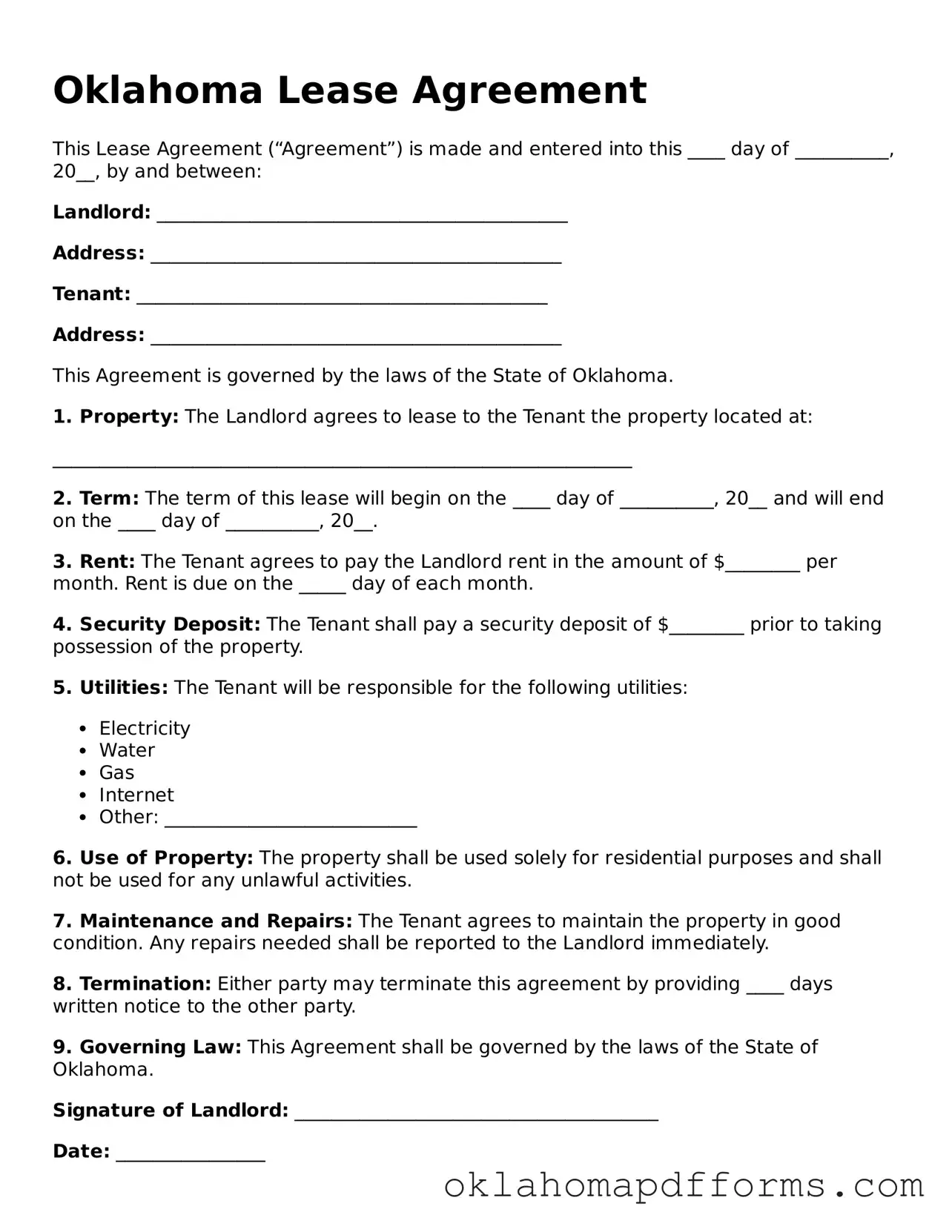What is an Oklahoma Lease Agreement form?
An Oklahoma Lease Agreement form is a legal document that outlines the terms and conditions under which a landlord allows a tenant to occupy a rental property. This agreement typically includes details such as the rental amount, duration of the lease, and responsibilities of both parties. It serves to protect the rights of both landlords and tenants by clearly defining expectations and obligations.
What information is typically included in the lease agreement?
A standard Oklahoma Lease Agreement usually contains the following information: names of the landlord and tenant, property address, lease term (length of the rental period), rent amount and due date, security deposit details, maintenance responsibilities, and any rules or regulations specific to the property. Additionally, it may include provisions for early termination and renewal options.
How long is a typical lease agreement in Oklahoma?
Lease agreements in Oklahoma can vary in length. Most commonly, they are for one year, but they can also be month-to-month or for a shorter or longer duration depending on the needs of the landlord and tenant. It is important for both parties to agree on the lease term and to have it clearly stated in the agreement.
Can a lease agreement be modified after it has been signed?
Yes, a lease agreement can be modified, but both the landlord and tenant must agree to the changes. Any modifications should be documented in writing and signed by both parties to ensure clarity and avoid misunderstandings. Verbal agreements are not recommended, as they may not hold up in legal situations.
What happens if a tenant needs to break the lease early?
If a tenant needs to break the lease early, they should first review the lease agreement for any specific terms regarding early termination. Many leases include a clause that outlines the process and any penalties involved. It is advisable for the tenant to communicate with the landlord to discuss options, which may include paying a fee or finding a replacement tenant.
Is a security deposit required in Oklahoma?
Yes, landlords in Oklahoma typically require a security deposit. This deposit serves as a financial safeguard for the landlord against potential damages or unpaid rent. The amount can vary but is generally equivalent to one month's rent. The lease agreement should specify the conditions under which the deposit may be withheld or returned after the lease ends.
What are the tenant's rights under an Oklahoma Lease Agreement?
Tenants in Oklahoma have several rights under a lease agreement, including the right to a habitable living environment, the right to privacy, and the right to fair treatment without discrimination. Additionally, tenants should receive proper notice before any eviction proceedings or significant changes to the lease terms. Understanding these rights can help tenants navigate their rental experience more effectively.
How can disputes be resolved between landlords and tenants?
Disputes between landlords and tenants can often be resolved through open communication and negotiation. If direct discussions do not lead to a resolution, mediation services or local housing authorities may provide assistance. In some cases, legal action may be necessary, but this should generally be a last resort. Both parties should keep detailed records of all communications and agreements to support their positions if needed.
